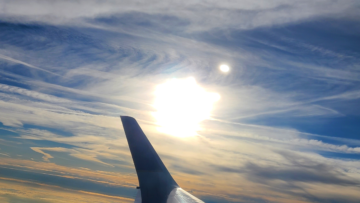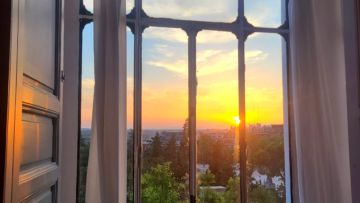This post contains affiliate links. We may earn commission on links you click or products you choose to purchase. Thank you.
Okay, maybe that’s a bit much, but we do really like to recommend a travel backpack for an easier journey. Curious to learn more? Read on, friends.
In prior posts, we’ve talked about how we like to pack in carry-on bags as much as possible. Most folks are probably familiar with the carry-on-sized piece of rolling luggage, but a few years ago we discovered the travel backpack, which, when combined with our rolling carry-on luggage, has become a game changer for us.
Ground Rules
We should clarify that while yes, probably most (or maybe even all) backpacks can be taken on a plane, not all backpacks are travel backpacks. In other words, there’s a difference. Sure, that relic you’ve been carrying around since Middle School is a backpack (we see you Army green Jansport backpack), and maybe it’s become something of a comfort item for you, but that doesn’t mean it’s designed to make your life easier while on the road.
By the same token (Tolkien? Haha!), we’re not talking about hiking packs, those with a frame that you usually take on longer hiking trips. Yes, those can pack a ridiculous amount of stuff and are designed to make the burden of becoming a pack animal a little less, well, burdensome. Still, they aren’t exactly travel-friendly when it comes to waddling down the plane or train aisle, trying to cram them in the overhead, and into small cars (like the ones you’ll rent in Europe, for example).
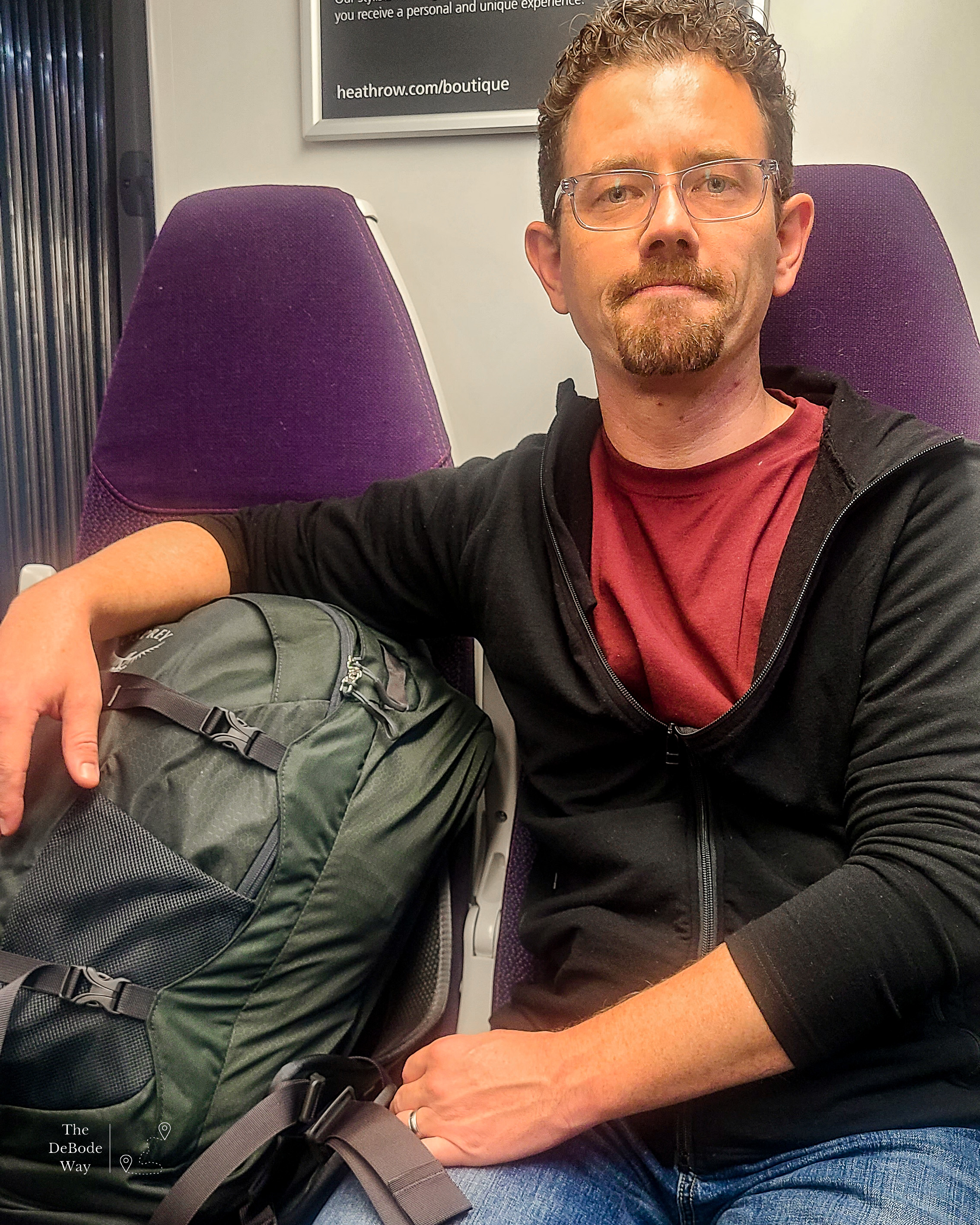
Instead, we’re talking about something in the middle: large enough to carry a decent amount of stuff but not so large as to require its own seat on the plane, but if there’s room for your pack to have its own seat, then by all means.
Our Picks
We really like the Osprey brand of backpacks, so much so that we actually have four of them and are on the lookout for more. Isn’t that excessive you might ask? It isn’t.
Our first venture into the Osprey line of backpacks was Tasha’s Porter 30 backpack. Shortly thereafter we replaced our regular (middle school) backpacks with the Daylite (Tasha) and Daylite Plus (Jason). Our most recent addition is Jason’s Farpoint 40. Let’s talk about the two travel packs first (Porter 30 and Farpoint 40), then we’ll briefly highlight why we’re even mentioning the other two packs in this blog, as they’re not really travel packs, though we still take them with us.
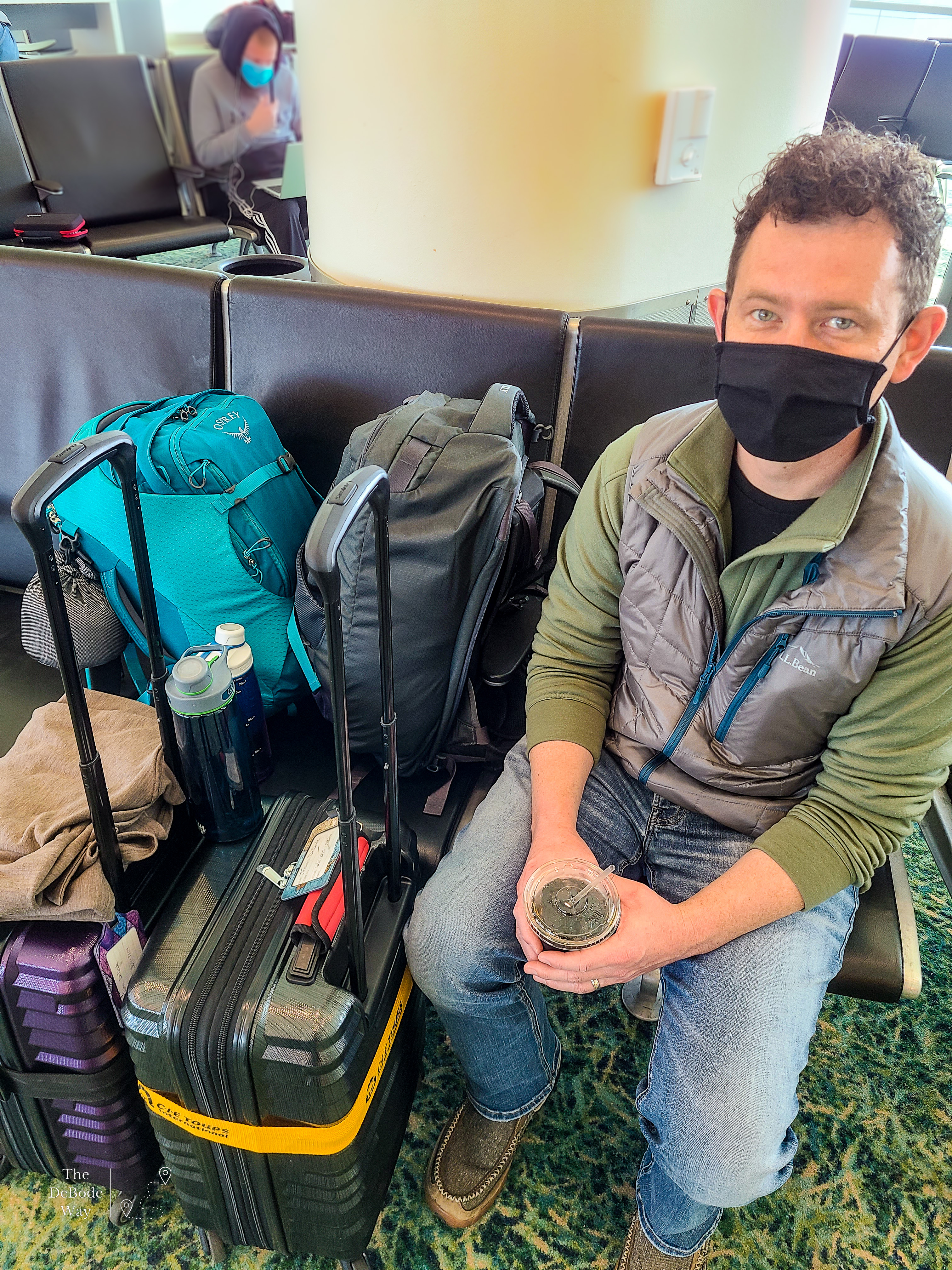
Why We Like Them
So, the obvious question is what makes these travel packs, rather than just your standard backpack? The main answer is that, while a standard pack usually has one main, large compartment, ours (both the Porter and Farpoint) have two. The one at the back of the pack is one large compartment that’s intended for clothes and the like. Tasha usually packs an extra set or two of clothes (you know…just in case your checked suitcase takes a different route than you), and sometimes even heavier shoes and coats – because carry-on bags don’t have weight limits like checked bags do. In Jason’s case, this back compartment is usually where our tech gear goes: the drone, GoPro, and all that comes along with it (so…many…pieces). These compartments have straps that do two things. First, because they let us synch our stuff down, they conserve space, which, when traveling, is premium. Second, they make it so stuff doesn’t move around, which is helpful when you have to run across an airport on short notice.
Both bags also have a second compartment, in front of the other, that is more like a normal backpack compartment. This area has other pockets where we can store all manner of random things. Jason’s Farpoint also has a laptop sleeve in this section, which we like because it means his laptop isn’t at the very back, or on the bottom when it’s sitting on a plane. Instead, there’s about 3” or more of stuff between it and the outside world. Tasha’s Porter has a padded laptop sleeve that rests against her back and typically ends up closest to the floor on the plane, so we have to be very careful about what we pack on top of it.
Both bags also have a series of other pockets, too, that let us pack an impressive amount of stuff into a relatively small space. Once it’s all loaded up, both packs have external straps that hook from back to front, and like in the back compartment, let us synch it down to both conserve space and keep things secure. We should also point out that the zippers can be locked (but the packs don’t come with locks), for extra security if you want. There are also clips aplenty where we attach water bottles, packable jackets, and so on. We also recently discovered we can use these outer synching straps to attach our packs to the handle of our rolling bag when we need a minute to stretch. They ride along on top quite nicely too.
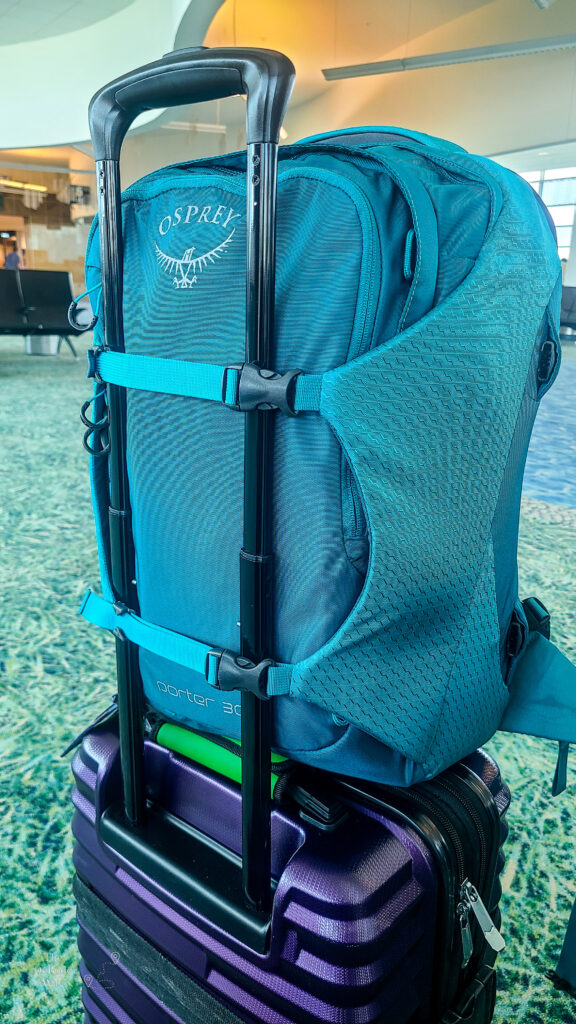
Like other packs, our travel packs also have belts and straps used to spread the weight of the pack across our bodies. If we have the belts clipped, this distributes the weight away from our shoulders and to our hips, which is far more comfortable on long-haul days and journeys across the airport. Both packs can also stow away the shoulder straps if needed, and have a side handle to carry more like a briefcase. Technically Jason’s pack has mesh pockets at the very front that are intended for water bottles, but if the pack is full, those pockets are useless for the most part (one of the common reviews for this specific pack). Fortunately, as we said earlier, there are clips we can use to clip a water bottle elsewhere.
We love our travel packs for a few different reasons. First, they’re both very well made (thanks Osprey!) and made of lightweight materials. That means the weight comes from what you put in the pack, not the pack itself, so you have total control of what you’re lugging around. And, as we’ve said before, keeping things as light and compact as possible is helpful on your travels and your back. They also look good, which of course is always important. But beyond that, they allow us to travel on the light: often with just these packs and a carry-on piece of luggage. That lets us remain flexible during our travels because we always have our stuff with us. We can make transportation changes if needed and don’t need to worry about tracking down a bag. So, these bags are great for travel because that’s what they’re designed for.
Sadly, these packs aren’t the greatest for just being out and about, exploring, and hiking. Why? Because even for being as compact as they are, they’re still larger than a regular pack. Fortunately, Osprey has other options, lots of other options (seriously, have you seen their website?), among which are the Daylite and Daylite Plus packs we mentioned earlier.
Our Non-Travel Travel Packs
These are more or less the same thing, but Jason’s Daylite Plus has an additional front pocket that Tasha’s Daylite pack doesn’t have and is slightly larger. Both have a single main compartment that can hold a laptop, just like a standard pack. Both have a smaller zippered pocket at the top of the front where we can keep smaller items, pens, keys, snacks, and the like. Again, pretty standard for a backpack. However, one of the biggest reasons we decided they were a good idea is they’re made of an ultralight material with a breathable panel up against our backs (backpack sweat is real!). Plus, they are relatively small, at least compared to our travel packs.

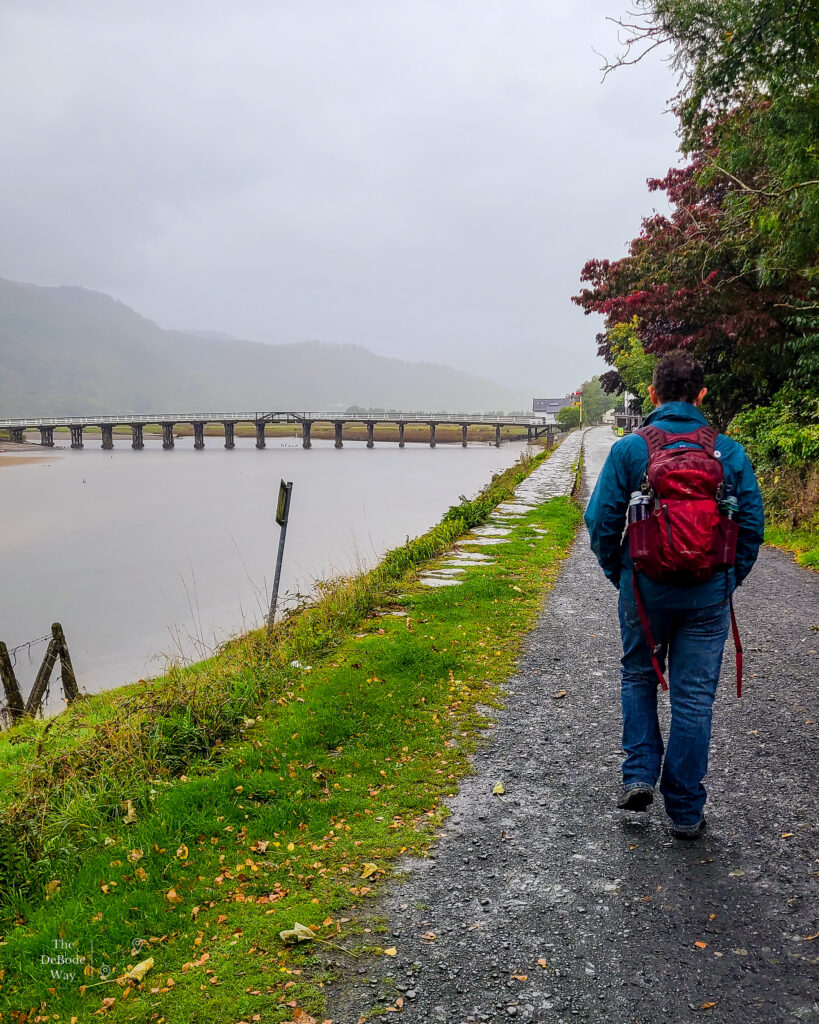
So, what we usually do is pack the smaller packs into our larger packs or carry-on luggage. Then we use the travel packs to get us where we’re going, and the smaller packs while we’re there: hiking (the drone and GOPRO also fit into Jason’s Daylite Plus pack, so no worries there), wandering around towns, shopping, visiting sites, and things like that. This might seem a bit much, but it keeps us flexible, mobile, and hands-free, and, well, it works for us.
Fun tip: you can also use these to carry your groceries in Europe and Asia. That’s helpful because many countries in those parts will charge you for plastic grocery bags. You can also pack a reusable grocery bag – we do this too if we remember!
Final Thoughts
We’ve spent a considerable amount of time (and money…*sigh*) working to find the right combination of luggage that lets us travel how we like. Yes, we could just opt for a larger suitcase, check it, and not need to worry about how to pack compactly. However, checking bags often comes with a steep price tag and there are other things to worry about (weight limits, lost bags, and so on). We could also travel for shorter periods, but where’s the fun in that? Plus, have you tried to lug a full-sized bag around a European city? It’s unpleasant and you will absolutely get that “did you pack the sink, too?” look from those around you. Your cab driver will appreciate not having to puzzle your huge bag into their little car, you won’t have to wrestle it off a train, and let me just say…cobblestones.
We’ve found this combination – a carry-on suitcase and our travel packs – lets us pack a considerable amount of stuff into a relatively small space. We’re routinely able to be gone for 1-2 weeks using this combination, which is just about perfect for us. Of course, we also do other things to make sure we can travel lightly, like doing laundry while abroad (we’ll talk about this next week), wearing natural fibers so we can wear our clothes multiple times before needing to wash them (except underwear…because…ew), and things like this. That means we need less stuff to begin with, which also makes it easier to pack in all carry-ons. You can read about some of our packing recommendations here.
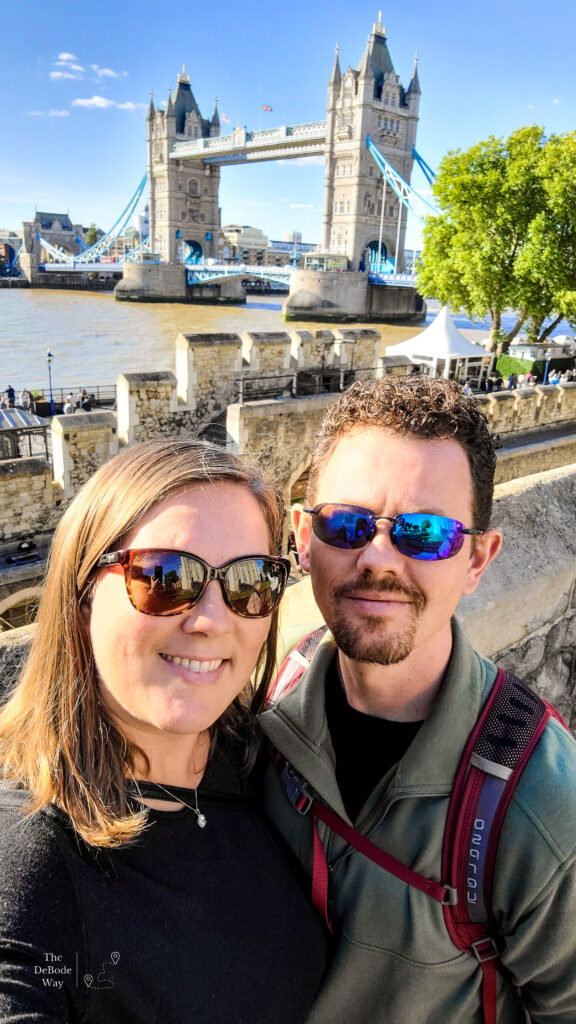
One last thing to be aware of. Keep in mind that while traveling, at least on planes, your onboard allowance of items is typically one carry-on bag and one personal item (check your airline to be sure). If you’re bringing a carry-on piece of luggage and your travel backpack, that’s your limit. In other words, if you are also carrying a purse or some other kind of bag, don’t be surprised if they make you combine bags before boarding the plane. Fortunately, there are loads of compact travel purses out there that can help make this easier, but that’s a story for a different post.
How do you pack for your travels? Do you prefer to check bags, or go the carry-on route like us? Are there certain bags you like more than others? Let us know; we’re always on the lookout for better ways to do things!
Happy travels!

